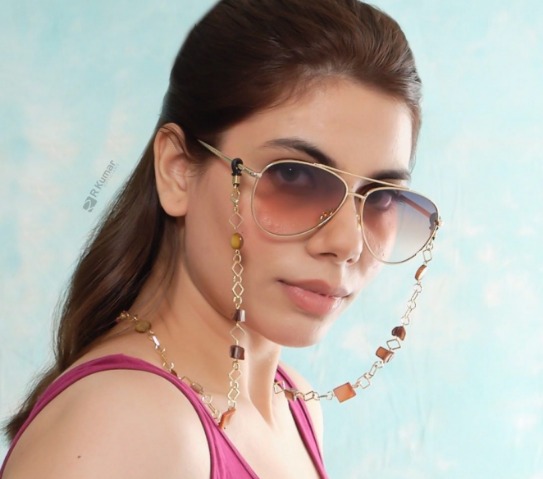CHAPTER 1 - Introduction to Sunglasses
The history of sunglasses can be traced back to prehistoric ages when the native people of Alaska wore glasses made of walrus ivory to shield their eyes from the sun's harmful rays. Roman emperor Nero was said to have watched gladiator fights through polished gems, and ancient records have revealed the use of smoky quartz glasses by court officials in 12th century China while interrogating witnesses. Later in 1752, James Ayscough, an English optician, designer of scientific instruments by profession, began experiments by placing tinted lenses in spectacles. He believed that blue or green-tinted glasses could be helpful in the correction of some visual impairments.
CHAPTER 1 - Introduction to Sunglasses

Around the 1900s, sunglasses became even more popular among celebrities in Hollywood. However, the first mass-produced, low-cost sunglasses was in 1929, with Sam Foster selling them in Atlantic City, New Jersey under the brand name of Foster Grant, and these were created to protect the wearer's eyes from the sun rays. Then, in 1936, Edwin H. Land used his patented polaroid filter to make sunglasses.
Sunglasses played a vital role during the Second World War, especially when Ray-Ban created aviator-style sunglasses with anti-glare and polarization filters. This style of sunglasses then became popular with celebrities and people in 1937, when they began to be sold to the public. In current times, sunglasses with UV protection are the norm, with various tints for sunglasses and sunglass styles that change every year.
What are sunglasses?
Sunglasses are protective eyewear created to help in protecting the eyes from bright sunlight or high-energy visible light.
What is the difference between sunglasses and goggles?
A sunglass helps shade the eyes from extremely bright light, made with either plastic or metal frames and two lenses darkened to eliminate too much light. These can be made with or without a prescription to help vision correction. On the other hand, goggles aid in protecting the eyes from external irritants like dust, debris, water, or any other substance that can cause harm to the eyes.
These goggles come with a strap that can be fastened around a person's head. Since they fit close to the eyes, they often create a sealed barrier. Therefore, there is no major difference between sunglasses and goggles, except for the previously mentioned differences.
What is the difference between sunglasses and shades
The difference between sunglasses and shades is in the way it is said. Shades are an informal way of talking about sunglasses. Depending on the individual's situation, they can say shades or sunglasses. Since both words denote the same thing, both terms can discuss sunglasses.
Why do blind people wear sunglasses?
Although a significant number of legally blind people have some degree of vision, wearing a pair of sunglasses aids blind people in protecting them from extremely bright lights or foreign objects. Additionally, blind individuals might feel uncomfortable showing their eyes to people or communicating much more comfortably while wearing sunglasses.
What are sunglasses made of?
Sunglasses are made with a pair of light-filtering lenses and a frame that prevents them from moving around. Some Sunglass styles have a single-one piece sheild-like mask lens. Lenses for sunglasses are made of high-quality colorized plastic or glass. Due to the optical accuracy of the lenses, there is no distortion when viewing objects or shapes. An emerging category of sunglasses incorporate lenses with light polarization technology to cut out unwanted, disturbing glare caused by reflection from polished surfaces like glass facades and surfaces of roads, sea and snow.
What is the meaning of the sunglasses category?
Sunglasses are divided by category based on visible light being transmitted. Depending on the VLT level, there are different categories from zero to four. Category zero sunglasses have none or minimal tint. Category one has a light tint on the lens of the sunglasses, categories two and three provide medium to dark tint on the sunglasses. Finally, the category four lens of the sunglasses has a very dark tint that allows only three to eight percent of light to pass through. These categories are usually referred to for the level of light absorption capacity of lenses in Europe, Canada, Australia and the US.



